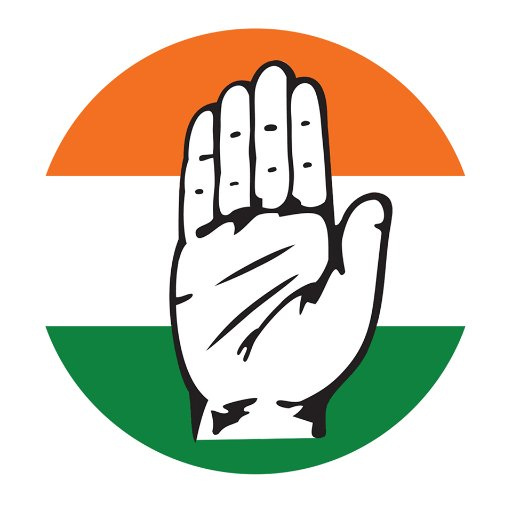India’s one Decade of Economic slowdown under Modi Government

- Dr. Satyendra Kumar
'Crony Capitalism’ under Modi government has created accumulation of wealth in the hands of selected capitalists. Due to a series of faulty economic policies formulated by the Modi government, Indian economy has witnessed worst ever disaster since Independence. Indian Economy was shining during 10 years of UPA government led by globally acclaimed Economist Dr. Man Mohan Singh. But during 10 years of Modi government, Indian Economy is in shambles. Economic growth of a country depends upon several national and international factors, but visionary leadership can transform even sluggish economy at faster pace as done by the Congress government, by undertaking a series of economic reforms and ushering an era of economic liberalization in 1992 which resulted in momentous economic growth and creation of millions of jobs for common citizens.
But over the last ten years, India has suffered through a senseless demonetisation, a botched GST rollout, increasing oligopolisation, random policy changes, based on the whims and fancies of the non-biological PM, and an atmosphere of fear and intimidation generated by his insecurities. Investment, as John Maynard Keynes reminded us, is not just a financial decision-it is a psychological decision as well. The last ten years have severely damaged this psychology and there is no evidence that Prime Minister Modi has ever recognised this.
Every day in the Modi-Made ‘Anyay Kaal’ is a new record of economic failure. We have already seen a 45-year high unemployment rate, a 50-year low household savings rate, and the first-ever decrease in real rural consumption. Investment as % of GDP (average over time) was 33.4% during the UPA and 28.7% in the Anyay-kaal. FDI as % of GDP rose from 0.8% in 2004 to 1.7% in 2014 under Manmohan Singh’s stewardship. As of 2022, it is now 1.5% Manufacturing as % of GDP (average over time) fell from 16.5% in UPA to 14.5% under the current Government.
Due to sudden demonetisation, millions of small-scale industries were shut down and in process, people working in these industries have lost their livelihood. Demonetisation failed to curb black money as 99% of the withdrawn 500 and 1000-rupee notes were returned, according to the RBI. This was expected as black money isn’t usually stored in currency, but property, bullion and more easily convertible currency like dollars. Thus, the dichotomy between ‘Black Money’ and ‘Black Wealth’: one is a flow variable and one is stock variable. And no amount of demonetization can bring about any change in stock variables. The claims of unearthing large amounts of black money are unfounded and based on a naïve and uninformed view of what actually constitutes black money. Trade across all facets of the economy was disrupted, and cash-centric sectors like agriculture, fishing, and the voluminous informal market, were virtually shut-down. Many businesses and livelihoods went under completely, not to mention the economic impact to the country when you have millions of productive people just standing in line for hours and hours, just to exchange or deposit cancelled banknotes, rather than working or running their businesses.
As a result, India stands at 138th position among other countries in terms of GDP per capita rank. There was no inclusive growth under Modi’s rule and only a few corporates have made profits. India’s position was 105 out of 127 countries in the recently released Global Hunger Index. This clearly shows that the quality of life under Modi’s rule has been deteriorating day-by-day.
Modi had pledged, during the run up to 2014 and 2019 Lok Sabha elections, to make India a five trillion-dollar economy by 2024 with double digit growth. However, in the last 10 years, India has not achieved what was promised by him. Now, he has been saying that steps are being taken to make India the third largest economy in the world. But the Indian economy is moving towards a disaster because of demonetisation, frauds in the banking sector to the tune of 90,000 crore, and accumulation of non-performing assets worth24 lakh crore.
Another spectacular failure on the part of the government is disinvestment. While it did sell ‘Air India’ to Tatas, it has had a dismal track record overall. To make matters worse, public assets have been handed over to select groups, inviting concerns from competitors and public sector employees. The proposed national monetisation pipeline has also failed to yield results.
India still needs large-scale public investments in education and healthcare. Such investments in our human capital have great potential to create significant jobs and will also have a direct impact on the standard of living of our citizens. A key landmark of this government was the adoption of a new National Education Policy (NEP). NEP 2020 recommends that investment in education should be 6% of the GDP. There is bipartisan consensus that we must strive to meet the 6% goal. However, expenditure on education has been less than 3% of the GDP over the last decade. Modi government has not established any new Central University, Indian Institute of Technology, National Institute of Technology and India Institute of Management Studies in the last 10 years. This proves Prime Minister Modi’s claim of making India a ‘Vishwa Guru’ hollow. When there is gradual decline in budgetary allocation in every passing year, how will higher education institutions become centre of quality teaching, research and innovation.
On the health front, the pandemic forced the government to raise healthcare expenditure. Yet there has been a rise in hunger and malnutrition, a reflection of the larger economic downturn being experienced by a substantial portion of our population. India is ranked 111th of 125 countries on the Global Hunger Index. Instead of addressing the issue, the government’s response has been to reject any such adverse findings.
In conclusion, last 10 years of Modi rule of Indian Economy have witnessed worst disaster since Independence. Demonetisation, banking fraud, faulty tax regime together with crony capitalism has damaged shining Indian Economy with no sign of recovery under Modi government.
The author is an Assistant Professor, Department of English, Kirori Mal College, University of Delhi







